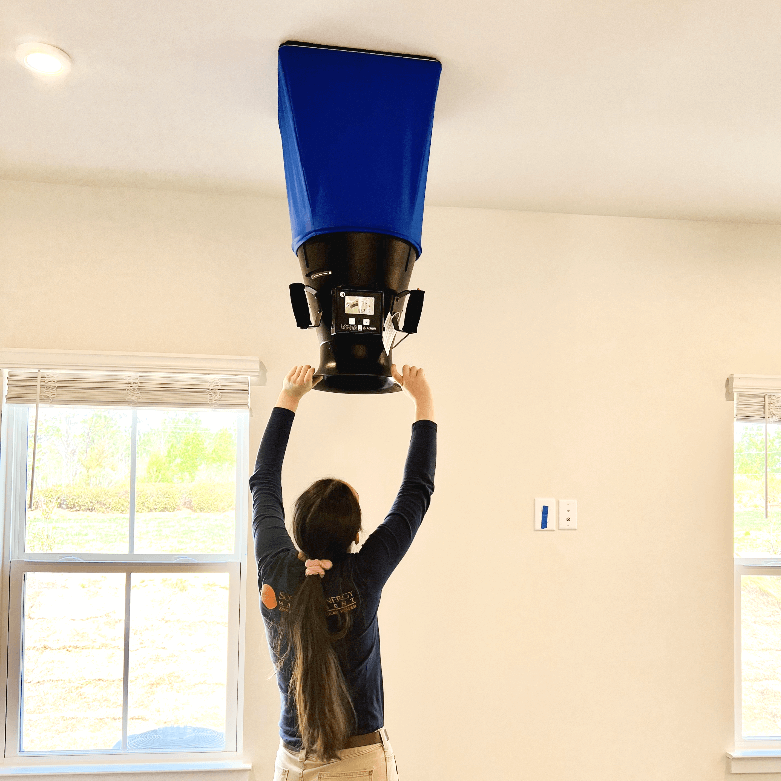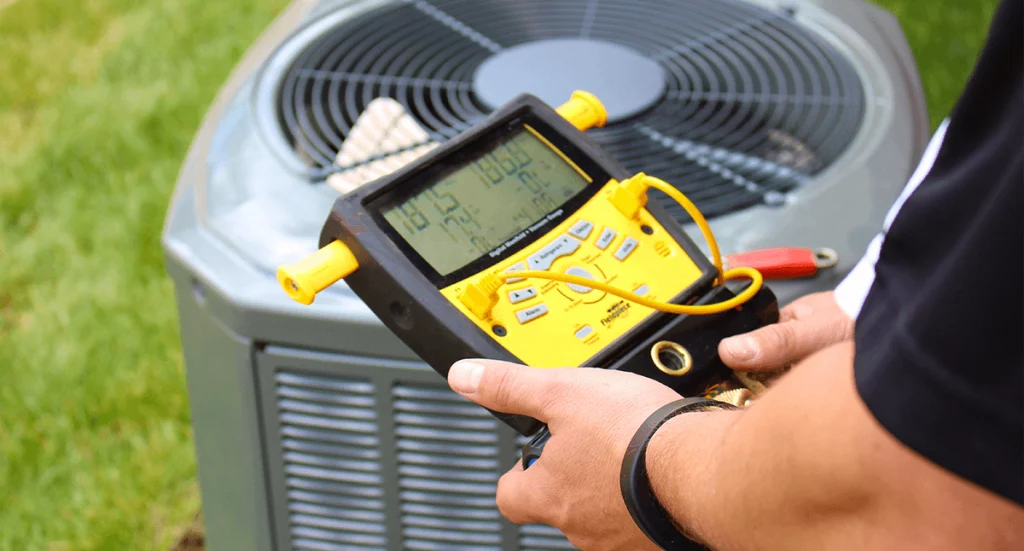What is HVAC Grading?
Developed by RESNET, the HERS industry, Air Conditioning Contractors of Americas (ACCA), International Code Council & the EPA
HVAC Grading is a 5 step testing process that reviews the quality & performance of HVAC systems in new homes. It’s typically done in tandem with HERS Ratings and other high-performance home programs. Each step receives a Grade of 1, 2, or 3. Grade 1 is the best of those HVAC rankings and rewards homebuilders for good HVAC design and installation in the form of better HERS scores, 45L Tax Credit Compliance, and a new ENERGY STAR Pathway.
Why is HVAC Grading important?
It all comes down to the need for quality assurance. Let’s start with some stats from our field experiences in one of our master-planned communities:
- We found that 75% of homes had oversized HVAC systems
- On the testing front, 75% of homes have had improper refrigerant charges, 25% had incorrect airflow, and 5% had inoperable thermostats.
We’ve learned there’s a need for HVAC quality assurance in our market. We’re all human, even the best HVAC contractors make mistakes that lead to comfort callbacks. That’s where we come in – our goal is to help you avoid callbacks & verify systems were installed correctly before closing.
How does the HVAC Grading process work?
To perform this service, the system must be operating correctly. This may sound obvious, but you’d be surprised at how often we find issues with zone dampers, thermostats, or even uncharged systems. Before we even start we’re identifying issues that help you avoid callbacks. Let’s dive into the 5 step process.

1. Design Review
Good design is where it all starts and arguably, it is the most important part. Whether we or the HVAC contractor does the Manual J, D, & S, our field raters verify that the HVAC design meets ACCA 310 tolerances and is done properly.
PRO TIP: Double check with your HVAC contractor that load calculations are being done on your homes!
Once onsite, our raters will determine if the as-built home matches the design by confirming
- Orientation
- Insulation R-values
- Window specs
- Floor areas per zone
- Window areas per zone
- The correct equipment is installed (this one is crucial)
If these tolerances are met, our raters can move on to the next step, if not, HVAC grading cannot be completed on the home until an updated Manual J is completed.
2. Duct Leakage
This isn’t new for most of you as duct testing is required by code in the vast majority of states including North and South Carolina.
Total duct leakage is part of the standard because excessive duct leakage can impact the performance of everything else.
Good News! The threshold to achieve Grade 1 is at or below the code requirements in most states. Duct leakage is a common driver of comfort and durability issues and can severely limit an HVAC system’s capacity to heat or cool. Check out our blog on duct sealing for best practices on tight HVAC systems.
3. Total Airflow Testing
With studies showing 70% of HVAC systems have inadequate airflow, evaluation of this step has very high value to you and ultimately the homeowner. Most blower fan motors have several speed settings for heating and cooling modes. Ensuring the correct speed settings are selected is crucial to system performance, longevity, and occupant comfort. Often these blower fan speed settings are left at the out-of-the-box default and the actual airflow performance is never assessed. Neglecting this step opens the door to warranty calls.
Our raters have the tools and knowledge to assess the total system airflow and, depending on your expectations, can set the fan speed correctly. Among the various benefits of this are, not needing to call back the HVAC contractor, and allowing our raters to continue with testing.
While the correct fan speed setting is important, the layout & duct sizes are also crucial to proper airflow. Any HVAC contractor will know the importance of static pressures and the relationship between high static pressures and resistance in the ductwork. A Manual D is the best approach to achieving proper room to room & total airflow. Ultimately, HVAC installers will need to size ductwork to meet room airflow requirements from the manual J (including returns) as well as install the ductwork with minimal kinks, bends, and compressions.

4. Watt Draw Testing
Blower fan watt draw is directly related to the airflow and the resistance in the ductwork. More resistance = higher watt draw, which causes the system to work harder. The standard evaluates the watt draw grade based on watt/cubic feet of air per minute (w/CFM).
A watt draw of ≤0.45 w/CFM is considered Grade 1
A watt draw of ≤0.58 w/CFM is Grade 2
A watt draw of >0.58 w/CFM is considered Grade 3
In order to minimize blower fan watt draw, proper duct design and installation must be achieved. In some cases, the target airflow of a system can be achieved by increasing the system’s fan speed setting to overcome the resistance in the ductwork. Whether this resistance is from undersized supply or returns ducts or compression and kinks, increasing the blower fan speed setting above the design increases the blower fan watt draw leading to higher utility bills and shorter equipment lifespan.
For a HERS Rating, a Grade 3 watt draw may negatively impact the home’s HERS score, but will not affect the refrigerant charge. However, if HVAC Grading is being used for Energy Star compliance, a blower fan watt draw Grade of 2 or better must be achieved.
5. Refrigerant Charge Evaluation
The final step is a refrigerant charge. Based on various studies, refrigerant charge is incorrect in >57% of systems and up to 82% of systems. Our data concludes that 75% of homes we’ve tested have improper refrigerant charges.
The ACCA 310 Standard has developed two methods to evaluate the refrigerant charge. The Weigh-in Method or Non-invasive Method. Neither method requires any gauges to be hooked up to the refrigerant lines or any kind of intervention. The result is either Grade 1 or 3 (charged correctly or not).
The Weigh-In Method
A documentation review requires the HVAC contractor to provide the amount of refrigerant that was added or removed from the system. With this information, the required quantity of refrigerant can be calculated based on line-set length, diameter, factory supplied line length, and refrigerant charge.
The Non-Invasive Method
A true performance test that evaluates the system performance based on five temperature conditions:
- Return air dry bulb
- Return air wet bulb
- Ambient air dry bulb
- Suction line
- Liquid line
This test requires that the ambient (outdoor) temperature is at least 70 degrees. Depending on the climate, this means this test will only be applicable during the summer months and shoulder seasons. However, when conditions are met, this is a very accurate way to determine the proper charge and allows builders to have HVAC contractors address any performance issues prior to homeowners experiencing comfort issues.

Ready to Get Started?
Are you receiving comfort complaints related to HVAC? Our team of building scientists is happy to help you verify things were done correctly before closing. Schedule a meeting to review your challenges so we can create a plan that gets your homes back on track for success.














